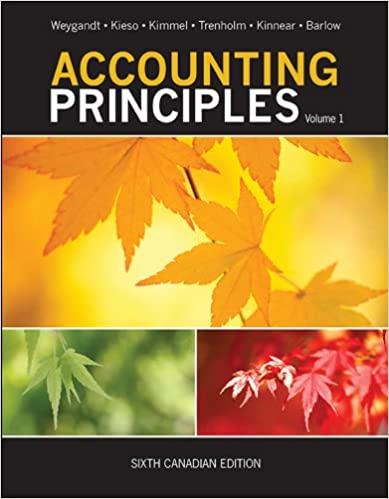Question
Subject: AUDIT AND ASSURANCE Answer all the MCQ's. Choose the correct option for each question 17. In a probability-proportional-to-size(PPS) sample with a sampling interval of
Subject: AUDIT AND ASSURANCE Answer all the MCQ's. Choose the correct option for each question
17. In a probability-proportional-to-size(PPS) sample with a sampling interval of $10,000, an auditor discovered that a selected account receivable with a recorded amount of 12,000 had an audited amount of $11,000.If this were the only misstatement discovered by the auditor,the projected misstatement of this account would be:
a. 833
b. 960
c. 1000
d. 2000
18. In attribute sampling, a 25% change in which of the following factors will have the smallest effect on the size of the sample?
a. Tolerable rate of deviation.
b. Number of items in the population.
c. Degree of assurance desired.
d. Planned assessed level of control risk.
19. For which of the following audit tests would an auditor most likely use attribute sampling?
a. Inspecting purchase orders for proper approval by supervisors.
b. Making an independent estimate of recorded payroll expense.
c. Determining that all payables are recorded at year end.
d. Selecting accounts receivable for confirmation of account balances.
20. An auditor is selecting vouchers for testing an entitys internal control activities related to proper approval of vouchers before checks are prepared.The auditor is matching random numbers with voucher numbers to determine which vouchers to inspect.If a random number matches a voided voucher,that voucher ordinarily would be replaced by another voucher in the random sample if the voided voucher.
a. Cannot be located in the voucher file.
b. Represents a dollar amount that is material
c. Indicates a deviation from the prescribed activity.
d. Is voided according to the control procedure
21. An auditor is performing attribute testing on a sample of 50 documents that results in three deviations.If the tolerable rate is 7% the expected population deviation rate is 5% and the allowance for sampling risk is 1% the auditor will most likely:
a. Increase the level of control risk because the tolerable rate plus the allowance for sampling risk exceeds the expected population deviation rate.
b. Accept the sample results and reduce control risk because the sample deviation rate plus the allowance for sampling risk exceeds the tolerable rate.
c. Accept the sample results and reduce control risk because the sample deviation plus the allowance for sampling risk is less than or equal to the tolerable rate.
d. Increase the level of control risk because the sample deviation rate plus the allowance for sampling risk exceeds the tolerable rate.
22. Which of the following statements is generally correct about the sample size in statistical sampling when testing internal controls?
a. As the population size doubles, the sample size should increase by about 67%.
b. The sample size is inversely proportional to the expected error rate.
c. There is no relationship between the tolerable error rate and the sample size.
d. The population size has little effect or no effect on the sample size.
23. An auditor is using statistical sampling in testing whether cash disbursements were properly authorized.The sample results indicate that the sample rate of risk exceeds the tolerable rate.Under these circumstances,the auditor most likely would reduce the
a. Planned reliance on the prescribed control.
b. Assessed level of control risk.
c. Planned reliance on substantive tests.
d. Tolerable rate of deviations.
Step by Step Solution
There are 3 Steps involved in it
Step: 1

Get Instant Access to Expert-Tailored Solutions
See step-by-step solutions with expert insights and AI powered tools for academic success
Step: 2

Step: 3

Ace Your Homework with AI
Get the answers you need in no time with our AI-driven, step-by-step assistance
Get Started


